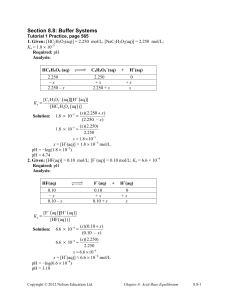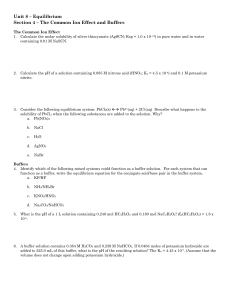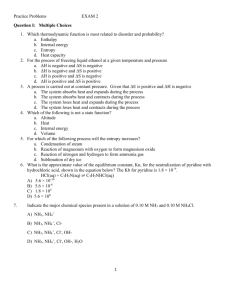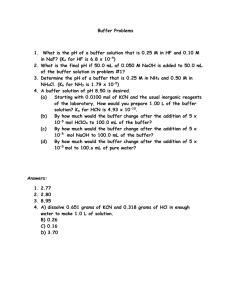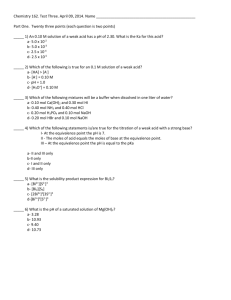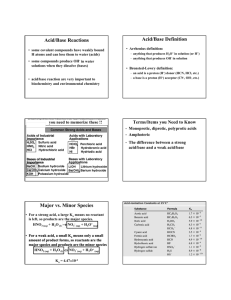buffer
advertisement
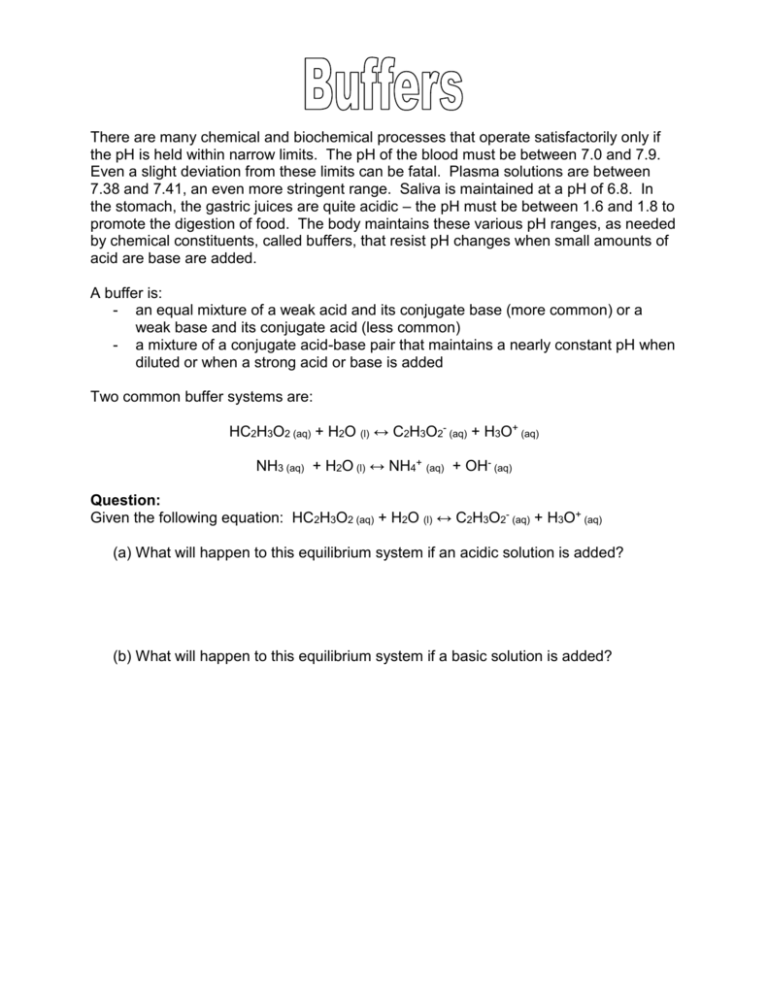
There are many chemical and biochemical processes that operate satisfactorily only if the pH is held within narrow limits. The pH of the blood must be between 7.0 and 7.9. Even a slight deviation from these limits can be fatal. Plasma solutions are between 7.38 and 7.41, an even more stringent range. Saliva is maintained at a pH of 6.8. In the stomach, the gastric juices are quite acidic – the pH must be between 1.6 and 1.8 to promote the digestion of food. The body maintains these various pH ranges, as needed by chemical constituents, called buffers, that resist pH changes when small amounts of acid are base are added. A buffer is: - an equal mixture of a weak acid and its conjugate base (more common) or a weak base and its conjugate acid (less common) - a mixture of a conjugate acid-base pair that maintains a nearly constant pH when diluted or when a strong acid or base is added Two common buffer systems are: HC2H3O2 (aq) + H2O (l) ↔ C2H3O2- (aq) + H3O+ (aq) NH3 (aq) + H2O (l) ↔ NH4+ (aq) + OH- (aq) Question: Given the following equation: HC2H3O2 (aq) + H2O (l) ↔ C2H3O2- (aq) + H3O+ (aq) (a) What will happen to this equilibrium system if an acidic solution is added? (b) What will happen to this equilibrium system if a basic solution is added? For a titration curve of a weak acid with a strong base there will be a buffering region where the pH of the solution changes very little despite the addition of more base. On the otherhand, when an strong acid is titrated with a strong base, the curve will rise sharply showing that a small addition of base/acid will have a large effect on the pH compared to the buffer solution. The Capacity of a Buffer There is a limit to the amount of strong acid or base that a buffer can neutralize before its pH begins to rise rapidly. A buffer’s capacity is determined by the concentration of its conjugate acid-base pair. Example 1: A 1.0 L buffer is prepared that contains 0.20 mol/L acetic acid and 0.20 mol/L sodium acetate at equilibrium. (a) Calculate the pH of the buffer. (b) If 0.10 mol of H+ is added to the buffer without changing the volume, calculate the pH. (c) Compare the change in pH if 0.10 mol of H+ is added to water to make a 1.0 L solution. Example 2: Calculate the change in pH that occurs when 0.10 mol HCl is added to an ammonia-ammonium chloride buffer containing 0.33 mol/L NH3 (aq) and 0.33 mol/L NH4+ (aq) at equilibrium. Assume no change in the volume of the buffer.




